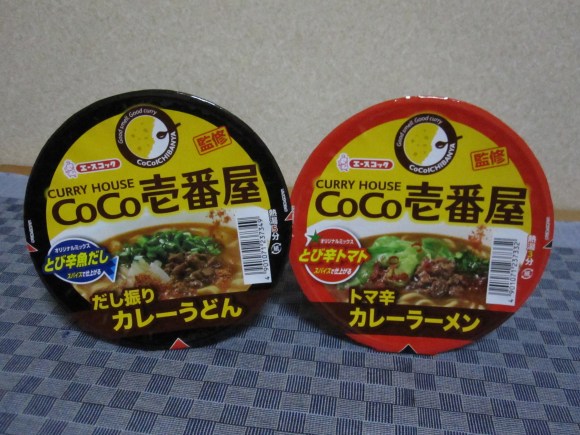
Ironically, two of Japan’s go-to choices for a hot, satisfying meal came from overseas. Ramen is Chinese in origin, and curry came to Japan from India via contact with the British Navy.
Deciding between the two dishes can be a difficult task, which is where curry ramen, noodles floating in a curry broth, comes in. Until now, though, trying to have the best of both worlds meant giving up on the chance to eat the offerings of Japan’s most popular curry chain, CoCo Ichi. But with a new team-up between the beloved chain and instant noodle maker Ace Cook, not only can you dine on CoCo Ichi curry ramen and udon, but you don’t even have to leave the house to do so.
The two varieties don’t just use different types of noodles, but differently flavored broths as well. For ramen lovers, there’s the Tomakara Curry Ramen, with tomato accents, whereas the Dashiburi Curry Udon uses bonito stock and broader noodles. At just 146 yen (US$1.40) each they’re extremely affordable, while at the same time quite a bit bigger than an ordinary cup of instant noodles.
We decided to start with the udon, figuring we’d save the more heavily flavored tomato ramen for later. The package comes festooned with the CoCo Ichi logo, as well as the restaurant’s slogan, “Good smell. Good curry.”
▼ Always more welcome to our tongues and noses than “Bad smell. Good natto.”
Surprisingly, the instructions deviate from the near-universal three-minutes usually required to cook cup ramen, instead indicating to let the noodles steep for five minutes. In light of this, we feel the term “instant udon” is a bit of a misnomer, and feel they should instead be classified as, “they’ll-still-be-ready-before-you-can-actually-cook-anything-else-udon.”
We peeled back the cover, taking care not to go past the marked red arrow. Inside we found three packets, one with the broth powder, another with toppings of green onions and small flakes of meat, and a third with additional spices.
▼ Clockwise from top: Toppings, broth powder, spices
As per the directions, we started by pouring in the toppings. Next up was the broth powder. As expected, the bonito stock lent it a bit of a fish-like aroma, but it mainly smells like curry powder.
Now it was time to add the hot water and enjoy an extra two-minutes of self-contemplation as we waited for the noodles to cook.
▼ Five minutes later
Once they were ready, it was time for the final step, adding the contents of the extra spice pouch, which were essentially the cayenne-pepper like shichimi, which is a popular condiment for udon.
Visually, there’s not a whole lot going on with the curry udon’s final form. The little flakes of meat from the topping packet seemed to have completely dissolved. In terms of smell, though, there was no mistaking this for ordinary udon, as peeling off the cover filled the room with the scent of curry. We grabbed a mouthful of noodles with our chopsticks and took a bite.
If you’re looking for spiciness, you won’t be disappointed, as it’s definitely present, although it hits more at the top of the throat than the mouth or tongue.
The bonito flavor isn’t quite as pronounced as we’d imagined after taking a whiff of the broth powder, but it’s still there. Unfortunately, the broth doesn’t really have much in the way of the rich sweetness that makes the curry at CoCo Ichi’s restaurants such a crowd pleaser. In its place, there’s a lot of saltiness, which makes the CoCo Ichi curry udon taste a little more like what you’d expect from a less distinguished curry maker.
Setting aside the question of whether or not they live up to their pedigree, though, it was still a tasty bowl of udon, and before long we’d polished off all of our noodles.
Now it was time for round two, the spicy tomato ramen. In contrast to the flat udon, this uses very thin cylindrical noodles.
Once again, there are three packets inside the bowl. In addition to the green onions and meat, the spicy tomato topping pouch also includes a bit of cabbage and red pepper. Without the fish stock, the scent of the broth powder here is all about the spices, with cumin and anise-like notes.
▼ The ramen only takes three minutes, so if you’re looking to maximize your eating efficiency, this is the way to go.
The spice pack here is a mix of chili and tomato, with the latter giving it just a touch of tanginess. We say “just a touch” because it was hard to notice it while the spiciness of the broth was assaulting the bottom of our tongue and the roof of our mouth. The CoCo Ichi curry ramen is easily twice as fiery as the udon, and while once again we didn’t taste anything particularly evocative of how the restaurant ordinarily prepares its signature dish, the level of spice here made sure we wouldn’t forget the ramen’s flavor anytime soon.
As a matter of fact, it’s so spicy that it creates a bit of a problem. For many ramen fans, polishing off the broth after eating all the noodles puts a joyous period on their dining experience, but without any starches to counteract all that spice, we now had two containers of leftover broth.
Of course, the other way of looking at this was that we now had two tubs of curry. Since it’d be a waste to dump them both down the drain, we decided to bust out our rice cooker and remix our dinner.
Really, we’re surprised at the oversight by CoCo Ichi and Ace Cook’s marketing department in forgetting to tell us that each cup of curry ramen or udon also comes with half of the ingredients for a cheap bowl of curry rice.
Photos: RocketNews24

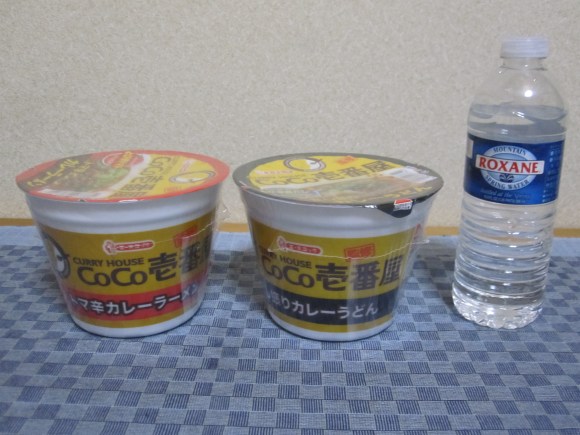
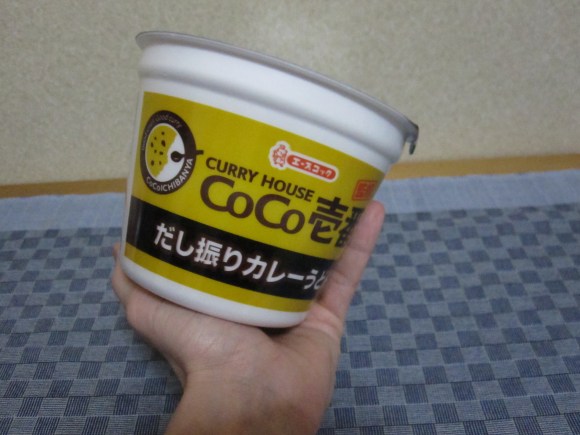
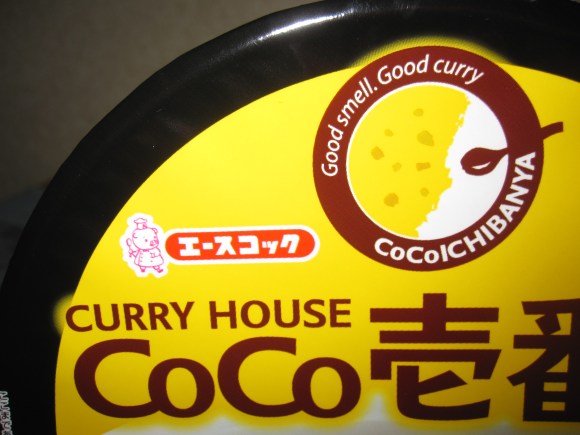
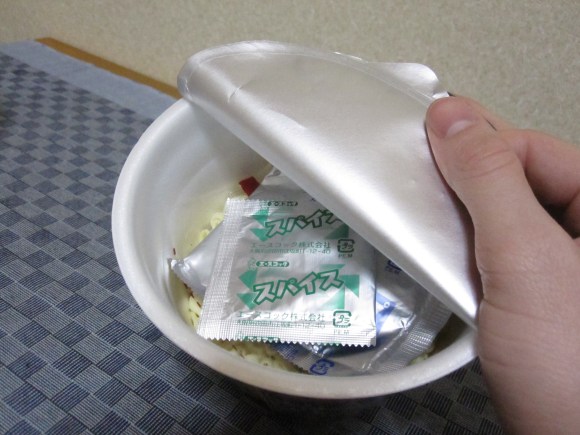
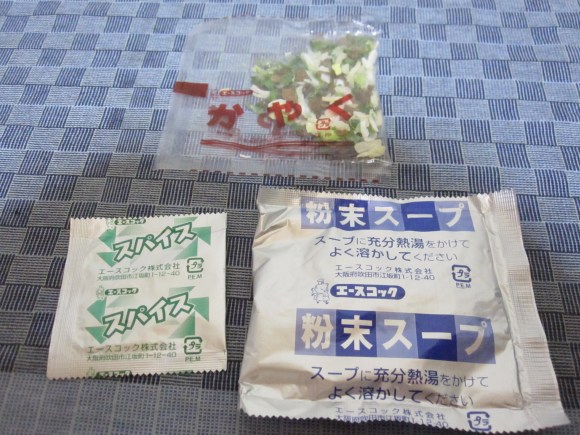
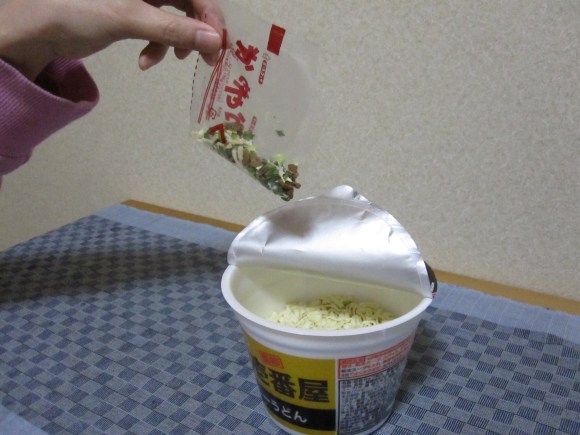
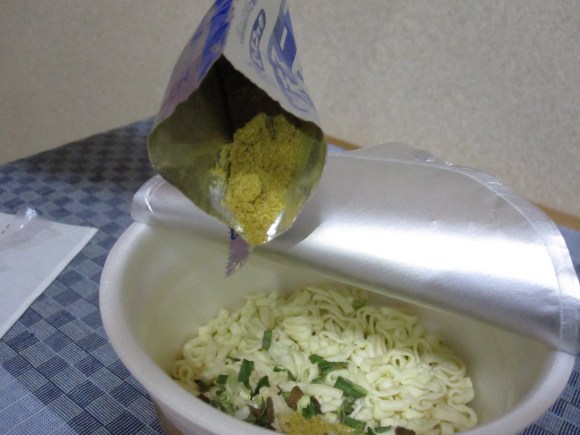
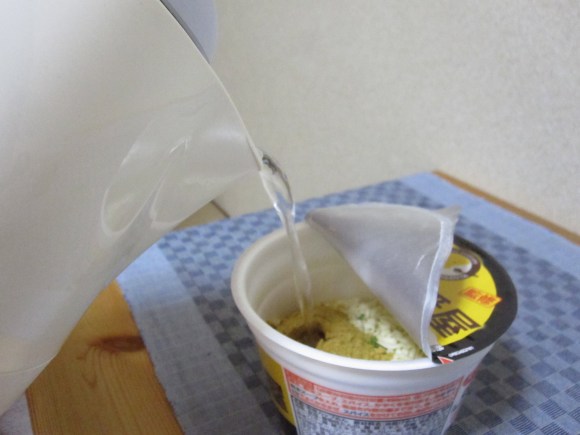
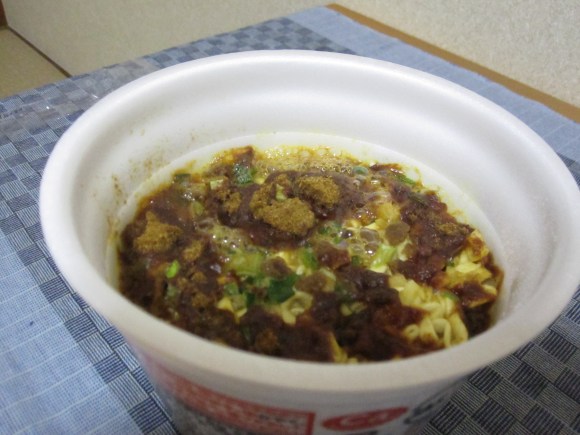
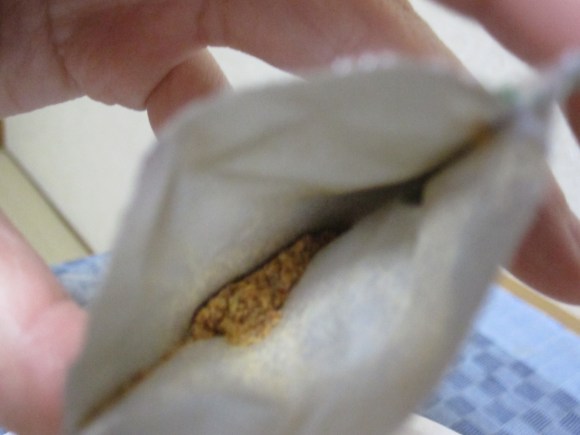
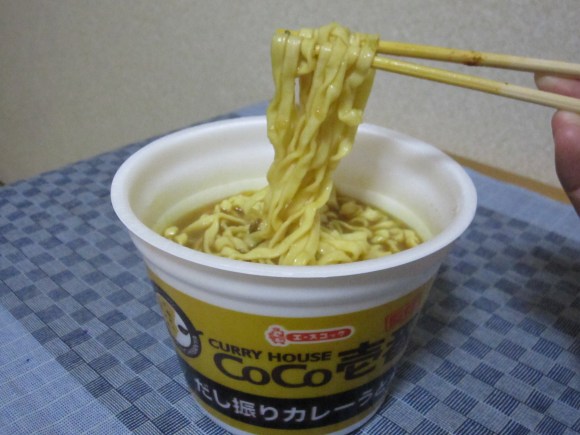
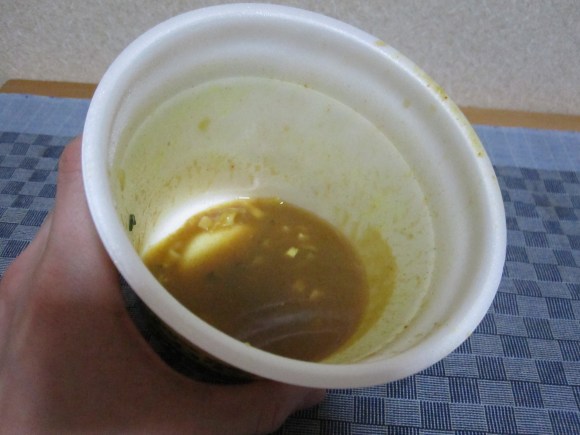
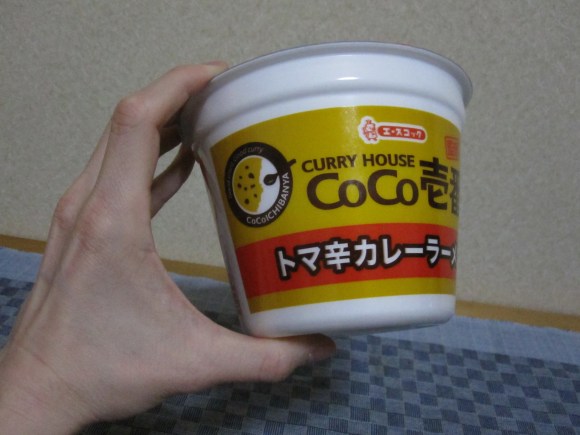
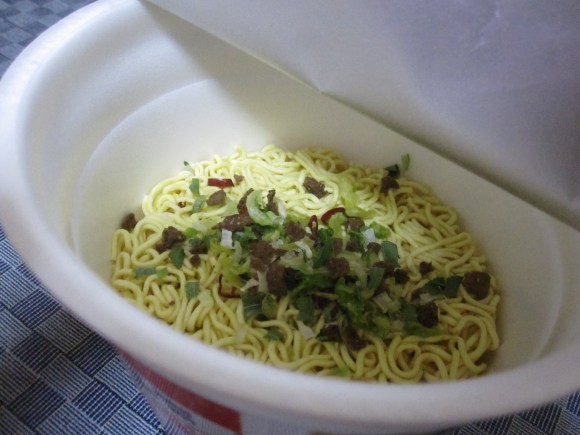
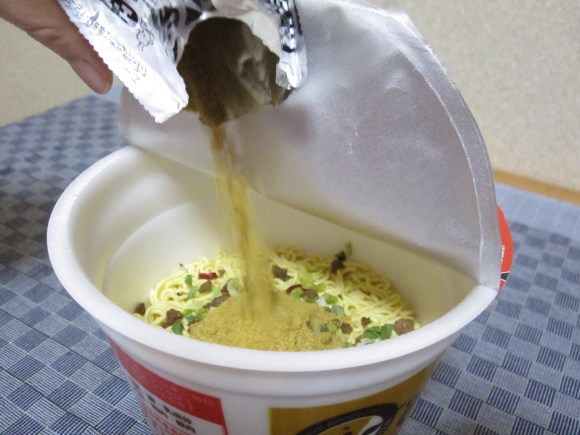
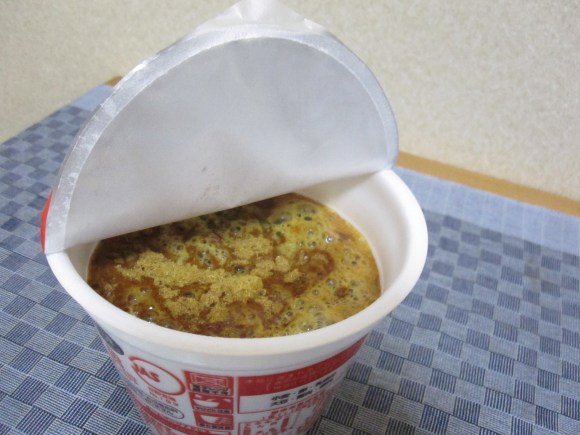
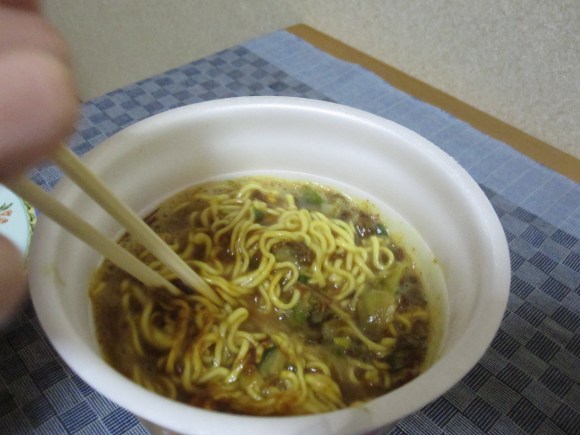
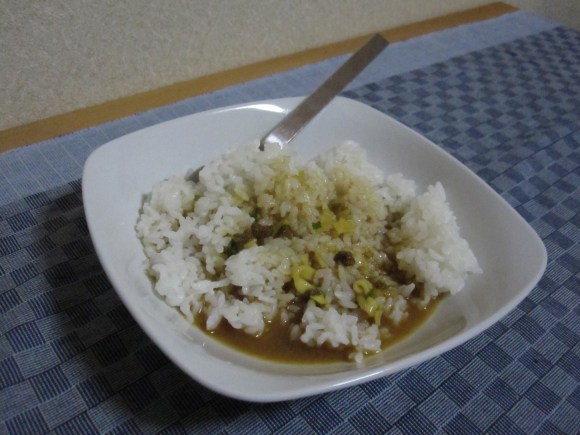
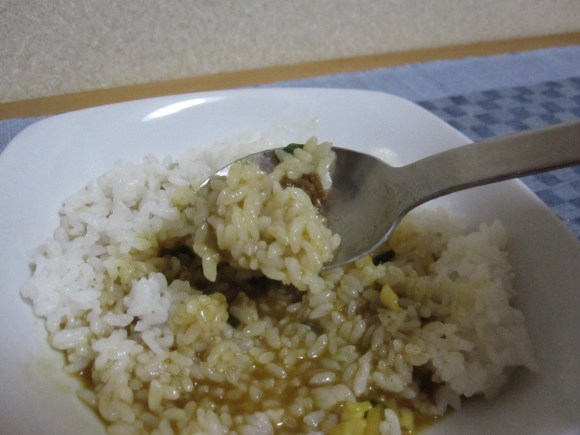
 Japan’s favorite curry rice restaurant teams up with convenience store for Super Spicy Curry Buns
Japan’s favorite curry rice restaurant teams up with convenience store for Super Spicy Curry Buns Japan’s biggest curry chain now offers a true vegetarian curry
Japan’s biggest curry chain now offers a true vegetarian curry Japan’s most popular curry chain now has vegan soup curry, and it’s delicious【Taste test】
Japan’s most popular curry chain now has vegan soup curry, and it’s delicious【Taste test】 Vegan curry rice – Taste-testing the new soy meat hamburger steak from Japan’s CoCo Ichibanya
Vegan curry rice – Taste-testing the new soy meat hamburger steak from Japan’s CoCo Ichibanya Curry for breakfast! Coco Ichibanya, Japan’s favorite curry chain, now has awesome morning sets
Curry for breakfast! Coco Ichibanya, Japan’s favorite curry chain, now has awesome morning sets Japanese beef bowl chain Sukiya’s 2026 Smile Box lucky bag basically pays for itself
Japanese beef bowl chain Sukiya’s 2026 Smile Box lucky bag basically pays for itself The 10 best day trips from downtown Tokyo【Survey】
The 10 best day trips from downtown Tokyo【Survey】 Japanese thug wear from Birth Japan perfect for those breaking bad next year
Japanese thug wear from Birth Japan perfect for those breaking bad next year Major Japanese hotel chain says reservations via overseas booking sites may not be valid
Major Japanese hotel chain says reservations via overseas booking sites may not be valid Typhoon destroys real Ghost of Tsushima island shrine torii gate, crowdfunding campaign launched
Typhoon destroys real Ghost of Tsushima island shrine torii gate, crowdfunding campaign launched Evangelion original anime studio Gainax is now completely dissolved, Eva’s creator mourns ruined friendships
Evangelion original anime studio Gainax is now completely dissolved, Eva’s creator mourns ruined friendships “Flat Takoyaki” at Nanpuu reimagines Japanese street food
“Flat Takoyaki” at Nanpuu reimagines Japanese street food Family Mart goes matcha crazy with new lineup of green tea sweets in Japan
Family Mart goes matcha crazy with new lineup of green tea sweets in Japan Amazon Japan makes payment policy change that could be a problem for foreigners in Japan
Amazon Japan makes payment policy change that could be a problem for foreigners in Japan Love Sugar Butter Sandwich Trees? There’s a flavor limited to Haneda Airport that you must try!
Love Sugar Butter Sandwich Trees? There’s a flavor limited to Haneda Airport that you must try! Starbucks Japan ready to get Year of the Horse started with adorable drinkware and plushies【Pics】
Starbucks Japan ready to get Year of the Horse started with adorable drinkware and plushies【Pics】 Hayao Miyazaki says Happy New Year to Studio Ghibli fans with new art for Year of the Horse
Hayao Miyazaki says Happy New Year to Studio Ghibli fans with new art for Year of the Horse 7 great places to see Mt. Fuji from without having to climb it
7 great places to see Mt. Fuji from without having to climb it We found possibly the quietest Japanese-style hotel in Tokyo’s bustling Shinjuku district
We found possibly the quietest Japanese-style hotel in Tokyo’s bustling Shinjuku district Cup Noodle tries an authentic Jiro-style ramen, but something’s not quite right
Cup Noodle tries an authentic Jiro-style ramen, but something’s not quite right Hello Kitty Choco Egg figures are an adorable trip through three periods of Japanese pop culture【Pics】
Hello Kitty Choco Egg figures are an adorable trip through three periods of Japanese pop culture【Pics】 Japan’s oldest largetooth sawfish in captivity back on display in Mie Prefecture
Japan’s oldest largetooth sawfish in captivity back on display in Mie Prefecture Cyberpunk anime meets traditional culture in Ghost in the Shell gold leaf Japanese changing screens
Cyberpunk anime meets traditional culture in Ghost in the Shell gold leaf Japanese changing screens The best Starbucks Japan Frappuccinos we want to drink again in 2026
The best Starbucks Japan Frappuccinos we want to drink again in 2026 We revisited Sweets Paradise after a decade to see if Japan’s dessert buffet still delivers
We revisited Sweets Paradise after a decade to see if Japan’s dessert buffet still delivers 7-Eleven Japan starts new temporary luggage storage service in over 300 branches
7-Eleven Japan starts new temporary luggage storage service in over 300 branches Disillusionment at Tsukiji’s tourist-target prices led us to a great ramen restaurant in Tokyo
Disillusionment at Tsukiji’s tourist-target prices led us to a great ramen restaurant in Tokyo Starbucks teams up with 166-year-old Kyoto doll maker for Year of the Horse decorations【Photos】
Starbucks teams up with 166-year-old Kyoto doll maker for Year of the Horse decorations【Photos】 Tokyo considering law requiring more trash cans following litter increase in heavily touristed area
Tokyo considering law requiring more trash cans following litter increase in heavily touristed area Tokyo’s Tsukiji sushi neighborhood asks tour groups to stay away for the rest of the month
Tokyo’s Tsukiji sushi neighborhood asks tour groups to stay away for the rest of the month Tokyo event lets you travel back in time, for free, to celebrate 100 years since Showa era start
Tokyo event lets you travel back in time, for free, to celebrate 100 years since Showa era start Sanrio theme park in Japan announces plans to expand into a Sanrio resort
Sanrio theme park in Japan announces plans to expand into a Sanrio resort Japan may add Japanese language proficiency, lifestyle classes to permanent foreign resident requirements
Japan may add Japanese language proficiency, lifestyle classes to permanent foreign resident requirements Stamina-destroying “Paralysis Noodles” are Tokyo’s newest over-the-top ramen innovation
Stamina-destroying “Paralysis Noodles” are Tokyo’s newest over-the-top ramen innovation Survey asks foreign tourists what bothered them in Japan, more than half gave same answer
Survey asks foreign tourists what bothered them in Japan, more than half gave same answer Japan’s human washing machines will go on sale to general public, demos to be held in Tokyo
Japan’s human washing machines will go on sale to general public, demos to be held in Tokyo Japan’s deadliest food claims more victims, but why do people keep eating it for New Year’s?
Japan’s deadliest food claims more victims, but why do people keep eating it for New Year’s? We deeply regret going into this tunnel on our walk in the mountains of Japan
We deeply regret going into this tunnel on our walk in the mountains of Japan Studio Ghibli releases Kodama forest spirits from Princess Mononoke to light up your home
Studio Ghibli releases Kodama forest spirits from Princess Mononoke to light up your home Put sesame oil in your coffee? Japanese maker says it’s the best way to start your day【Taste test】
Put sesame oil in your coffee? Japanese maker says it’s the best way to start your day【Taste test】 No more using real katana for tourism activities, Japan’s National Police Agency says
No more using real katana for tourism activities, Japan’s National Police Agency says Starbucks Japan reveals new sakura drinkware collection, inspired by evening cherry blossoms
Starbucks Japan reveals new sakura drinkware collection, inspired by evening cherry blossoms Updated cherry blossom forecast shows extra-long sakura season for Japan this year
Updated cherry blossom forecast shows extra-long sakura season for Japan this year We underestimated the special curry spoon from Japan’s favorite curry chain【Taste test】
We underestimated the special curry spoon from Japan’s favorite curry chain【Taste test】 Curry rice king Coco Ichi removes 80 percent of rice, replaces it with something else in new dish
Curry rice king Coco Ichi removes 80 percent of rice, replaces it with something else in new dish Curry house CoCo Ichibanya has 1,247 branches in Japan, but only one has this special topping
Curry house CoCo Ichibanya has 1,247 branches in Japan, but only one has this special topping Cold curry noodles? Is Japan’s favorite curry rice restaurant’s idea crazy enough to work?
Cold curry noodles? Is Japan’s favorite curry rice restaurant’s idea crazy enough to work? Lifehack for Curry Fiends: Get More for Your Yen at CoCo Ichibanya
Lifehack for Curry Fiends: Get More for Your Yen at CoCo Ichibanya Insane Lump of Meat Curry, a.k.a. “Bam! Hearty Tender Meat Curry,” returns to Japan’s CoCo Ichi
Insane Lump of Meat Curry, a.k.a. “Bam! Hearty Tender Meat Curry,” returns to Japan’s CoCo Ichi CoCo Ichi hamburger steak curry for vegetarians? Taste-testing the meatless option in Taiwan
CoCo Ichi hamburger steak curry for vegetarians? Taste-testing the meatless option in Taiwan Curry chain CoCo Ichi opens branch in Japan serving Japanese curry rice created outside Japan
Curry chain CoCo Ichi opens branch in Japan serving Japanese curry rice created outside Japan Beyond katsu curry: Tare katsu curry now being served at Coco Ichibanya
Beyond katsu curry: Tare katsu curry now being served at Coco Ichibanya Famous curry chain now offers Low Carb Curry, a delicious treat for the health-conscious
Famous curry chain now offers Low Carb Curry, a delicious treat for the health-conscious Should you add tartar sauce to Japanese curry rice? CoCo Ichi makes diners an unusual offer
Should you add tartar sauce to Japanese curry rice? CoCo Ichi makes diners an unusual offer Instant vs. Restaurant Ramen Project: Moko Tanmen Nakamoto deliciously spicy miso【Taste Test】
Instant vs. Restaurant Ramen Project: Moko Tanmen Nakamoto deliciously spicy miso【Taste Test】 A taste of Japanese curry usually only sold overseas, at Tokyo’s Curry House CoCo Ichibanya World
A taste of Japanese curry usually only sold overseas, at Tokyo’s Curry House CoCo Ichibanya World Cup Noodle’s new versions are more expensive with higher-quality ingredients — are they worth it?
Cup Noodle’s new versions are more expensive with higher-quality ingredients — are they worth it? CoCo Ichibanya now selling Taiwanese Lo Bah Spice Curry for a limited time【Taste test】
CoCo Ichibanya now selling Taiwanese Lo Bah Spice Curry for a limited time【Taste test】 Mr. Sato goes halal at new CoCo Ichibanya that caters to Muslim diners
Mr. Sato goes halal at new CoCo Ichibanya that caters to Muslim diners
Leave a Reply